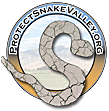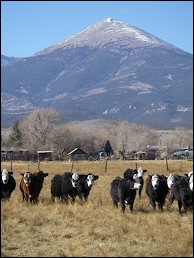
Baker Ranch is a fourth-generation cow-calf operation in Snake Valley. We are sponsoring this website to show you how much we treasure Snake Valley. This is a place we choose to be in, and as stewards of the land, we take care of it so that our grandchildren will also be able to live on this beautiful land.
Baker Ranch started when George W. Baker (no relation) stopped in Snake Valley in 1876 on his way from Missouri to the mines in Nevada. He planted fruits and vegetables to supply the nearby mines, as well as harvested grasses to feed cattle during the cold months. Over the years he built up the ranch operation, expanding fields and irrigated meadows to cover nearly 2,000 acres and increasing his livestock operation to about 600 head of cattle and 100 horses.
In 1914 the Baker family sold the ranch to Aztec Land and Cattle Company, and Guy Saval, a Basque ran it, hiring many Basques to help. For the next seven years the town of Baker was nicknamed "Basque Town." Rodeos and dances were frequently held, and the cattle operation became principally a sheep operation. In 1921 Guy Saval sold the ranch, and it went through a series of owners.
In the 1920s, Fred Baker (no relation to George W. Baker family) from Delta came out to work on the ranch as a ranchhand. He enjoyed Snake Valley, and kept it in his memory when he returned to Delta. In the 1950s, when Fred had decided to buy a ranch, he found a ranch in Snake Valley for sale at Silver Creek. His wife Betty remembers that Fred said not to take too many things because they probably wouldn't be there for long.
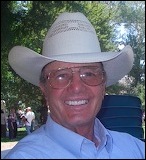
The Baker family today manages a modern ranch, using artificial insemination to produce the best cattle possible, treating noxious weeds before they spread, and using the latest technology to produce the best alfalfa and grain crops. As a family operation, even the children are involved in helping out on the ranch. Over a million pounds of beef and several thousand tons of hay are produced each year, supporting the economy. Some of the alfalfa hay goes to dairies, which produce milk, cheese, and other dairy products that you consume. Baker Ranch is an important part of the tax base for White Pine and Millard Counties.
The ranch provides excellent wildlife habitat, ranging from springs with native frogs and fish to wet meadows where thousands of migratory birds congregate each year. The Baker Ranch pond is home to hundreds of ducks and geese, while sandhill cranes, long-billed curlews, and sage grouse are often seen in or near the fields. The Nevada Department of Wildlife estimates over 400 deer 50 pronghorn antelope used the ranch in 2007.
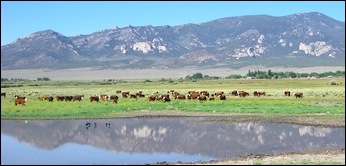
The ranch is one of the largest water users in Snake Valley, using water rights that in some cases go back over 100 years. The water is used to irrigate meadows to provide pasture for cows and to irrigate fields to grow crops. Some of that irrigation water that is used sinks into the ground and reaches the water table. The crops and meadows provide cover to stabilize the soil.
The Baker family is committed to helping protecting Snake Valley. In order to be able to have healthy cattle and fields, we know that we have to take care of the land and the environment. Agriculture is not a high profit business, on a good year we might make 3 to 4 percent profit. Yes, that's less than can be made by simply investing in the stock market, but we ranch for more than money. We like to be a good neighbor to the community, to have a good place to raise our children, and to be able to breathe clean air in a beautiful location.
Here are some photos that illustrate life on the Baker Ranch.
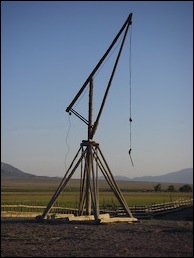
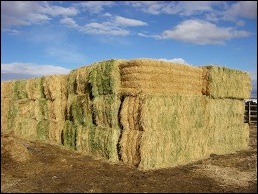
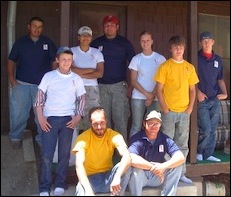
In the early days, hay derricks were used to stack the hay. The hay we produce today is sold to dairies, horse owners, and other cattle operators in California and Nevada. The hay crew makes it possible to farm as many acres as we do.
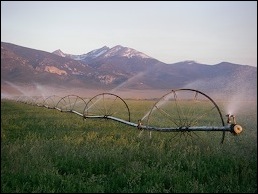
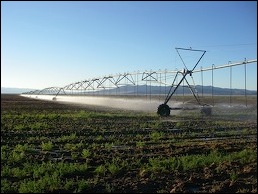
Irrigation is needed to raise crops. Most of the water comes from mountain streams and is applied with wheel lines, or more common now, with central pivots.
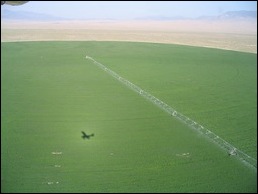
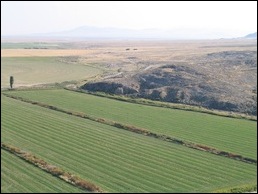
The pivot irrigation is used for large circular fields. An alfalfa field can provide up to four crops a year.
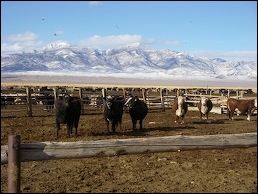

We have a variety of hereford, black angus, red angus, and simmental cattle on the ranch. Cowboys still move cows around the old-fashioned way, when they don't take a break to give a baby a ride.

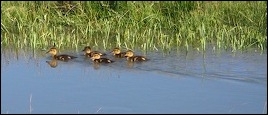
The views on the ranch are spectacular, from watching a neighbor's horses run across a meadow to baby ducklings swimming in one of the irrigation ditches.
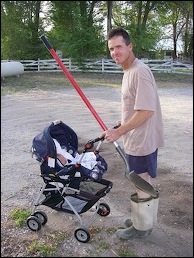
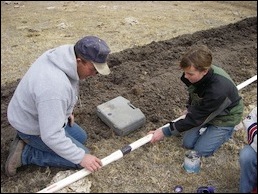
The youngest member of the Baker family is quickly initiated into ranch work on an irrigating trip with Dad, while another youngster learns how to put pipe together with her father.
